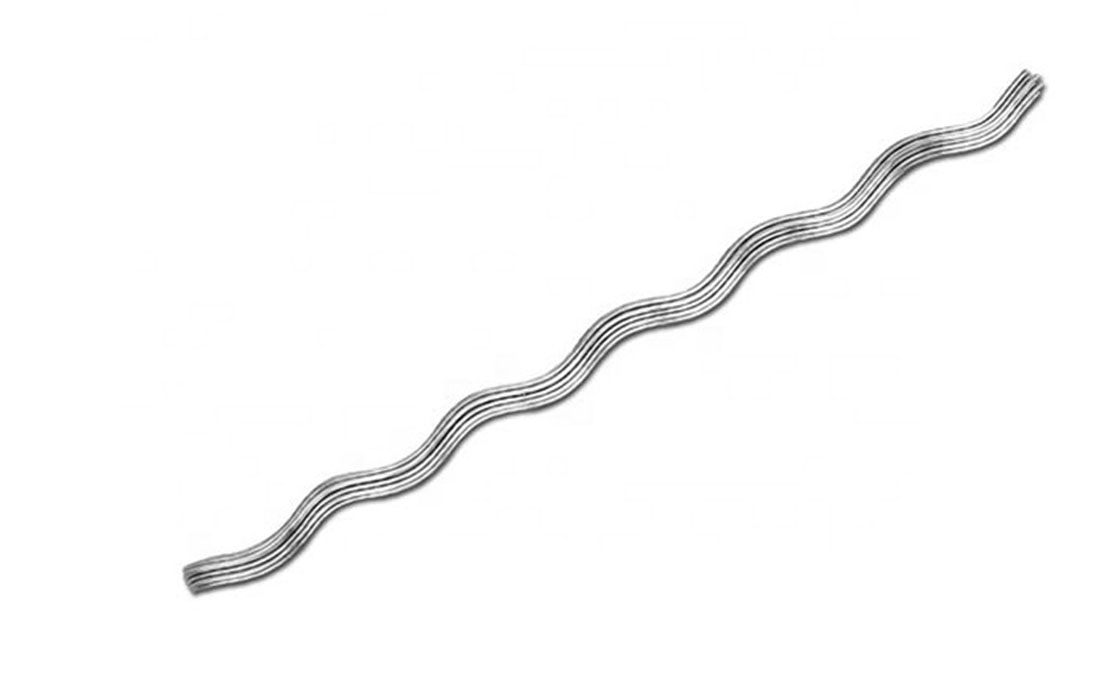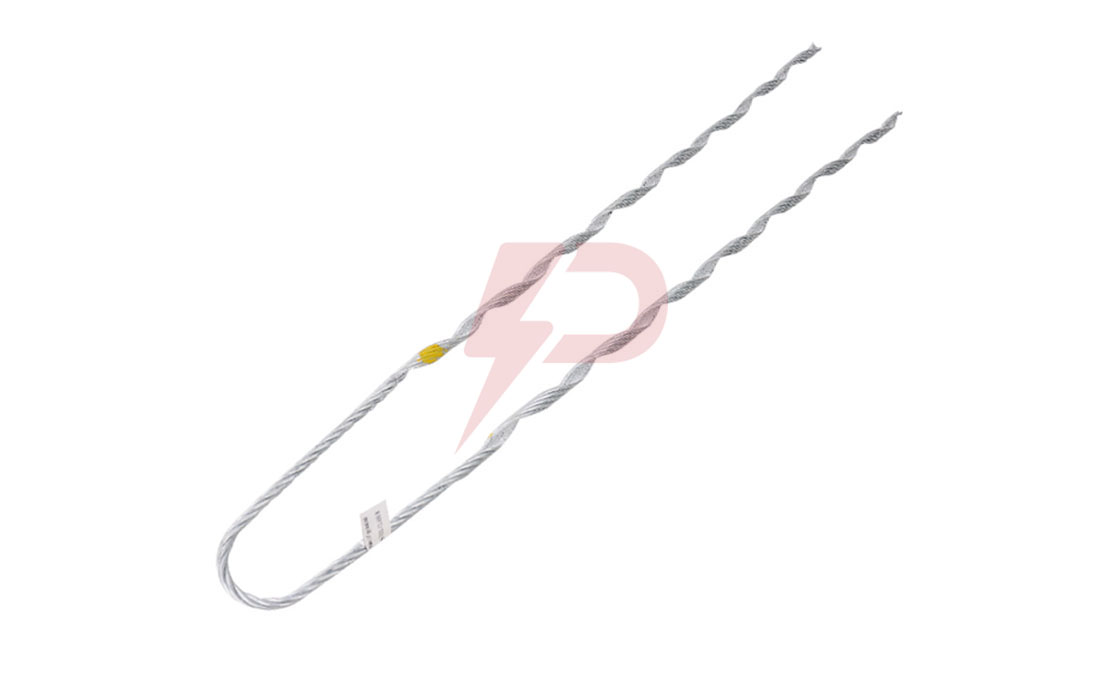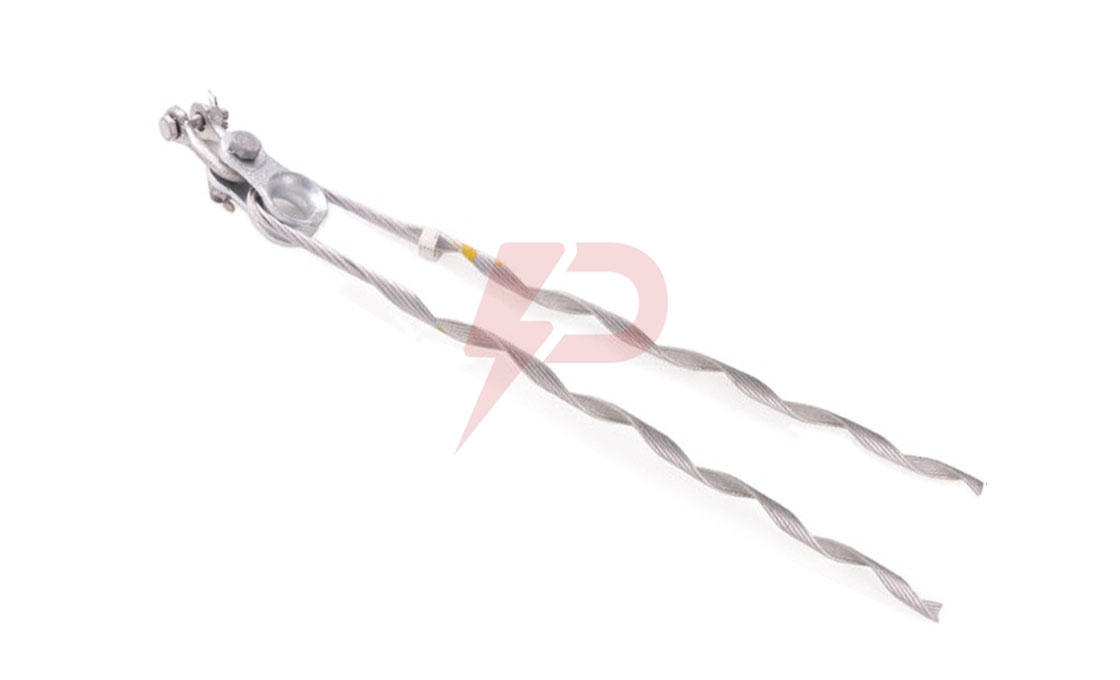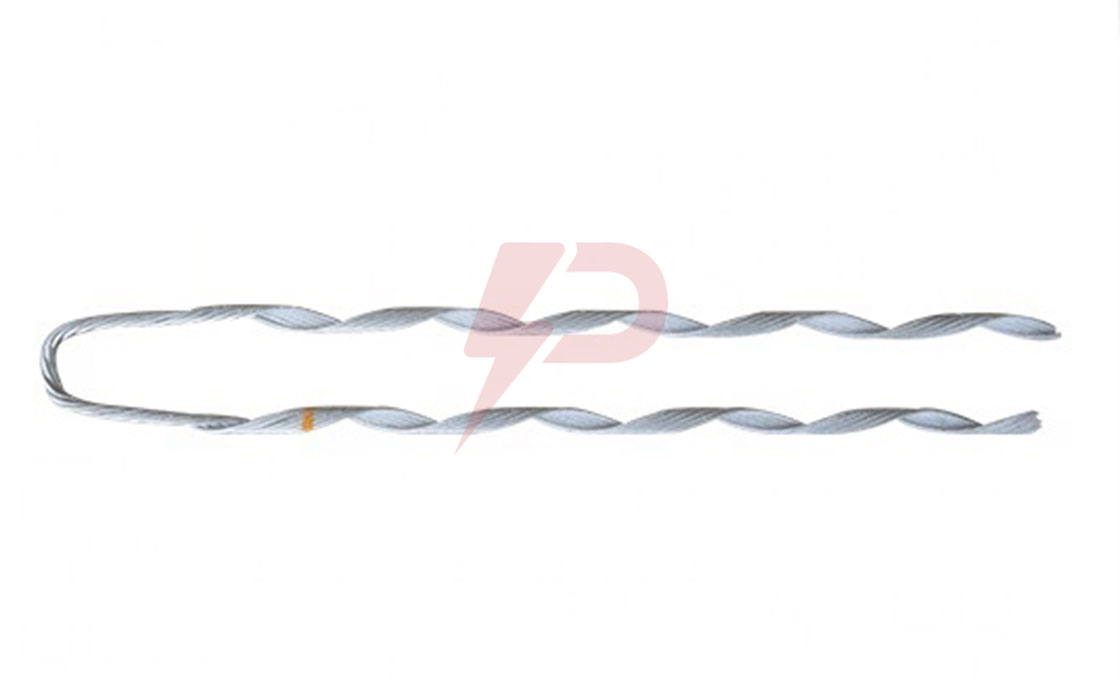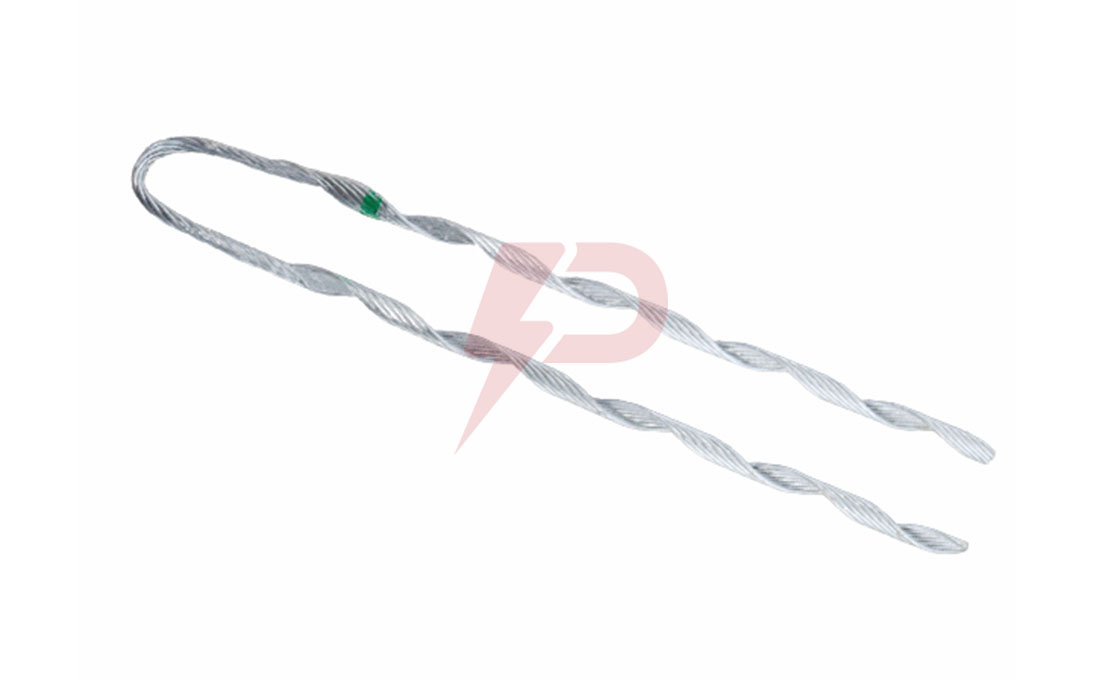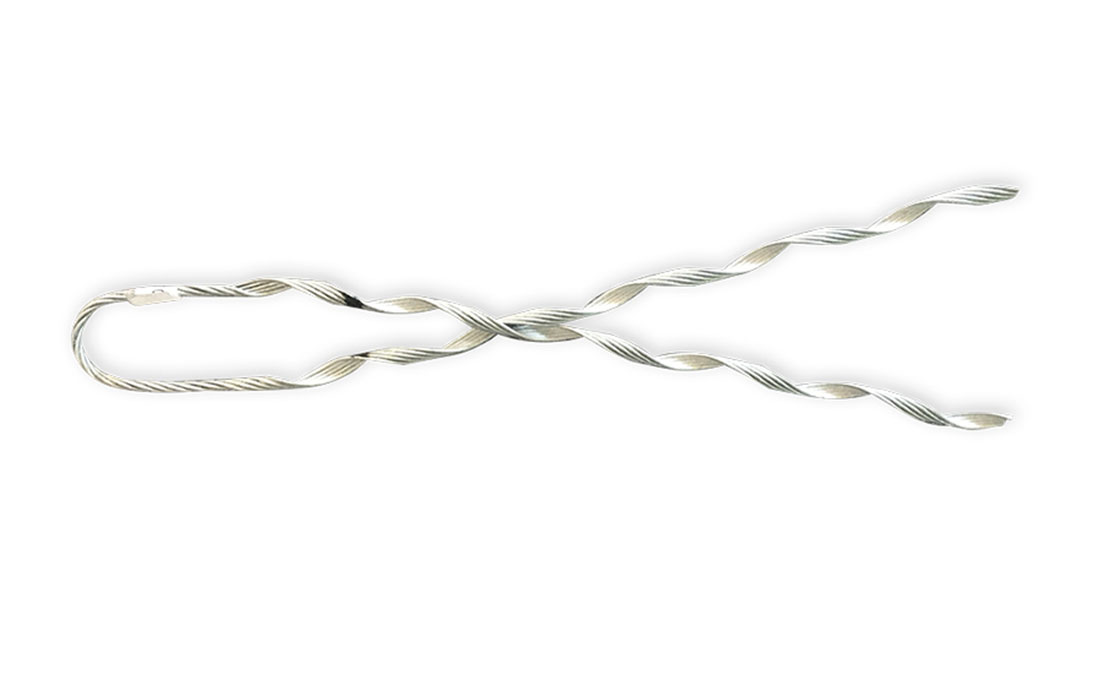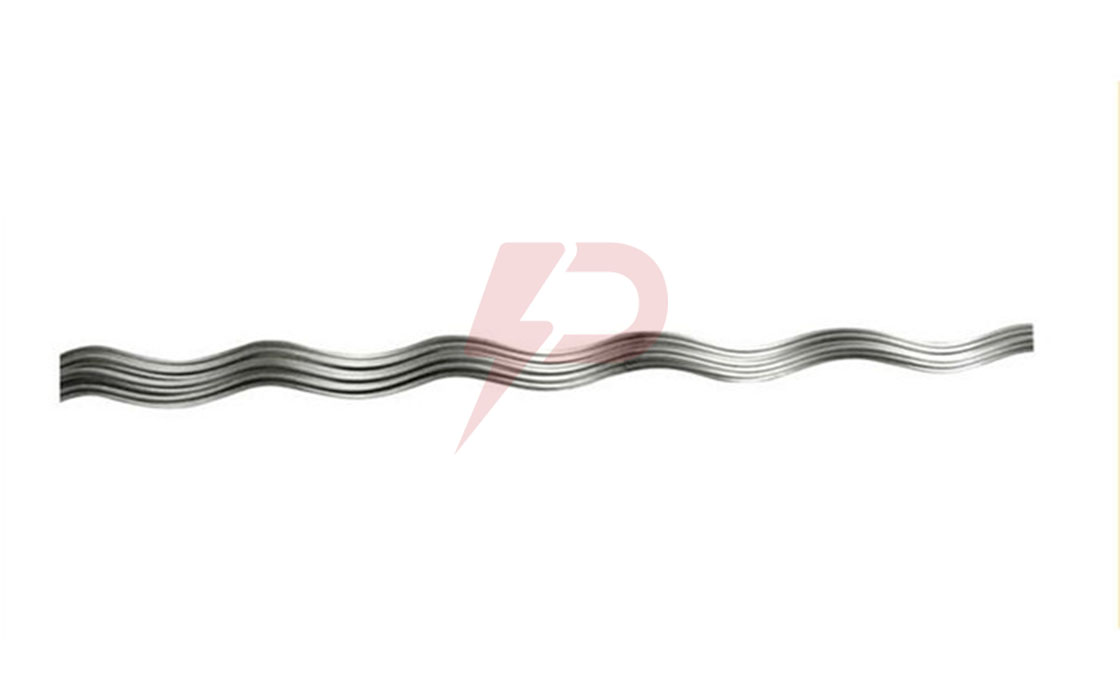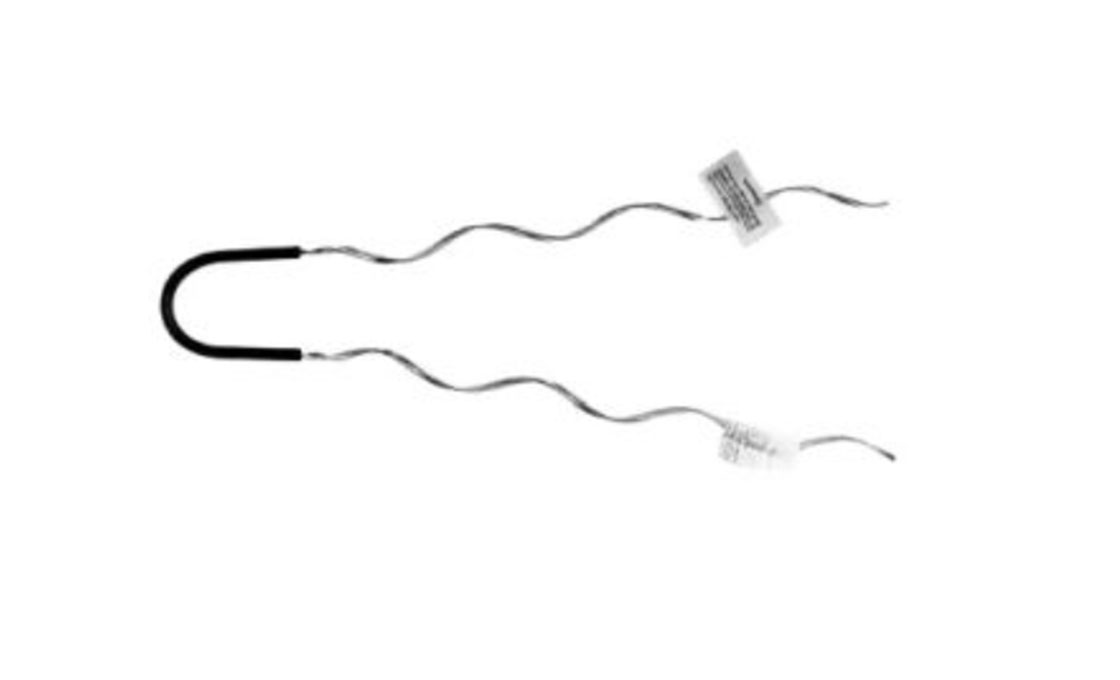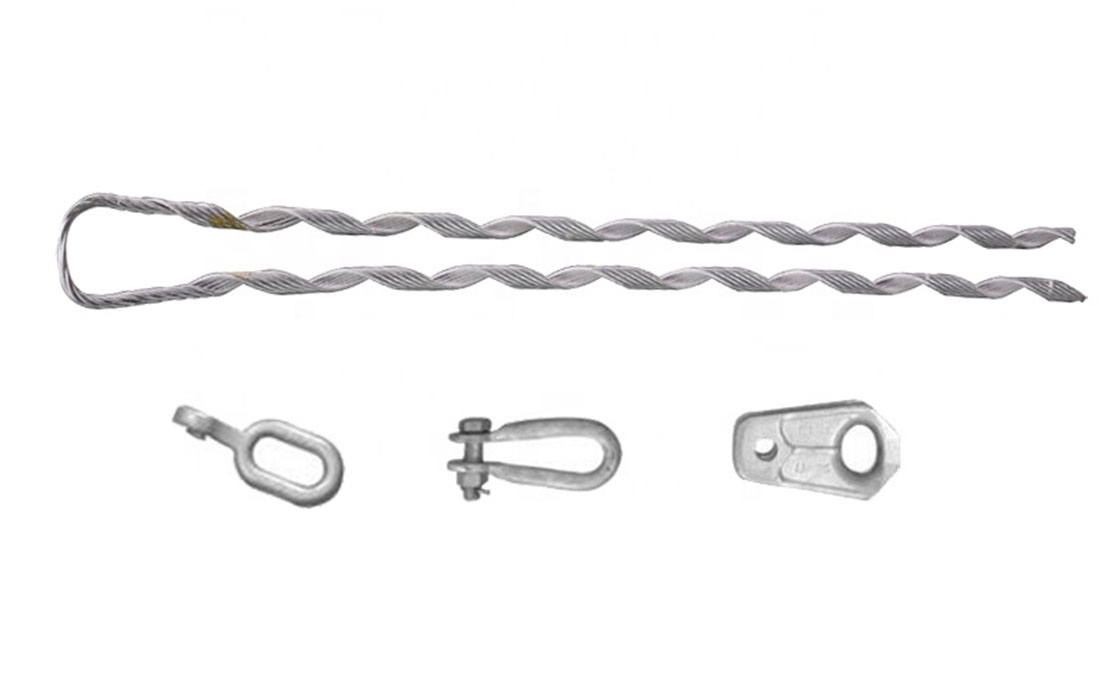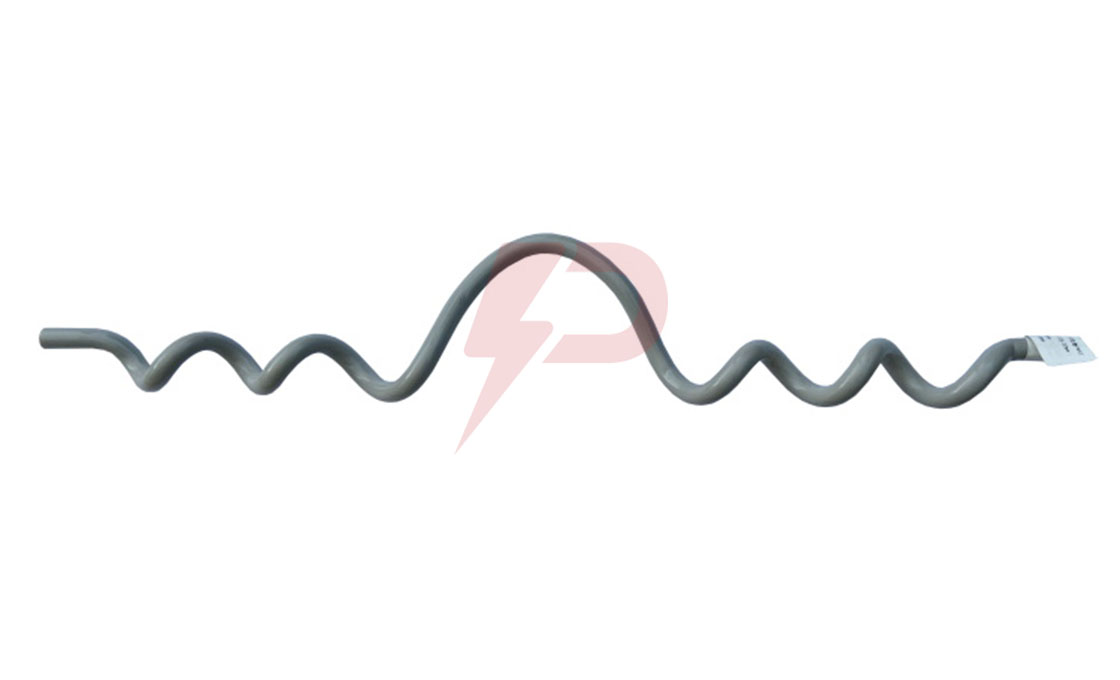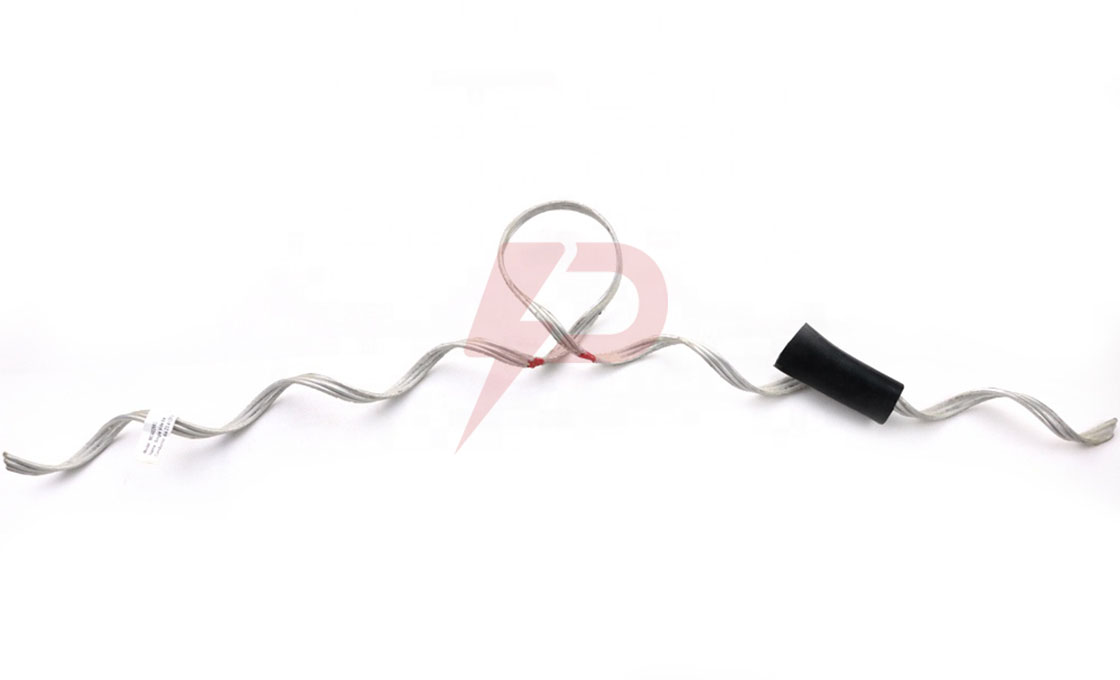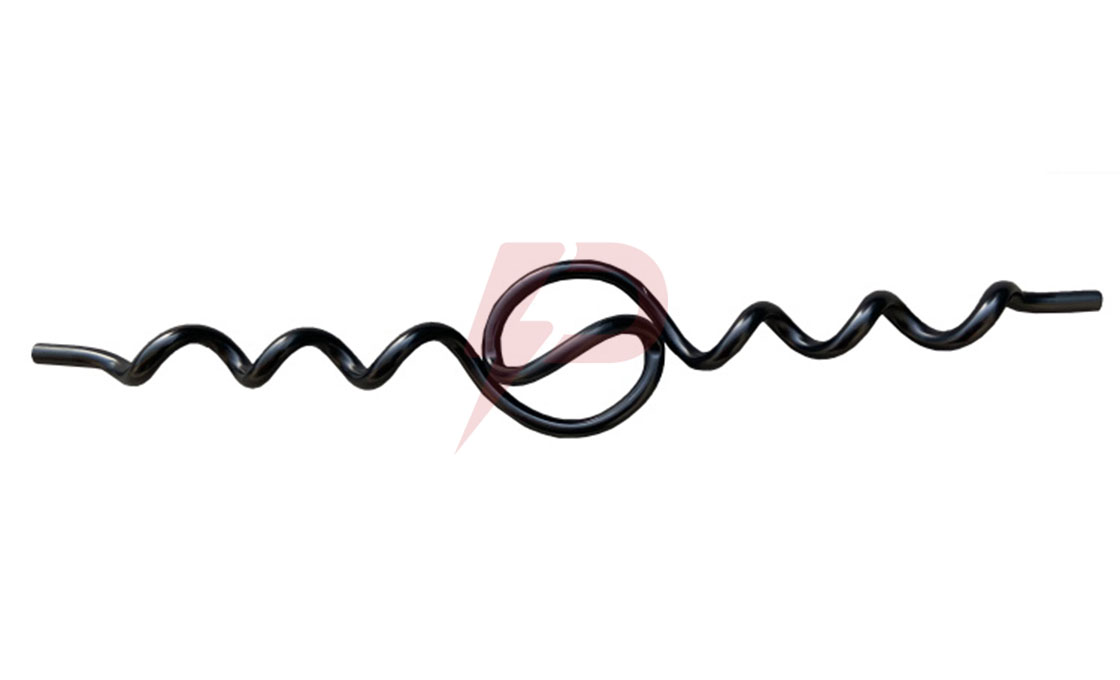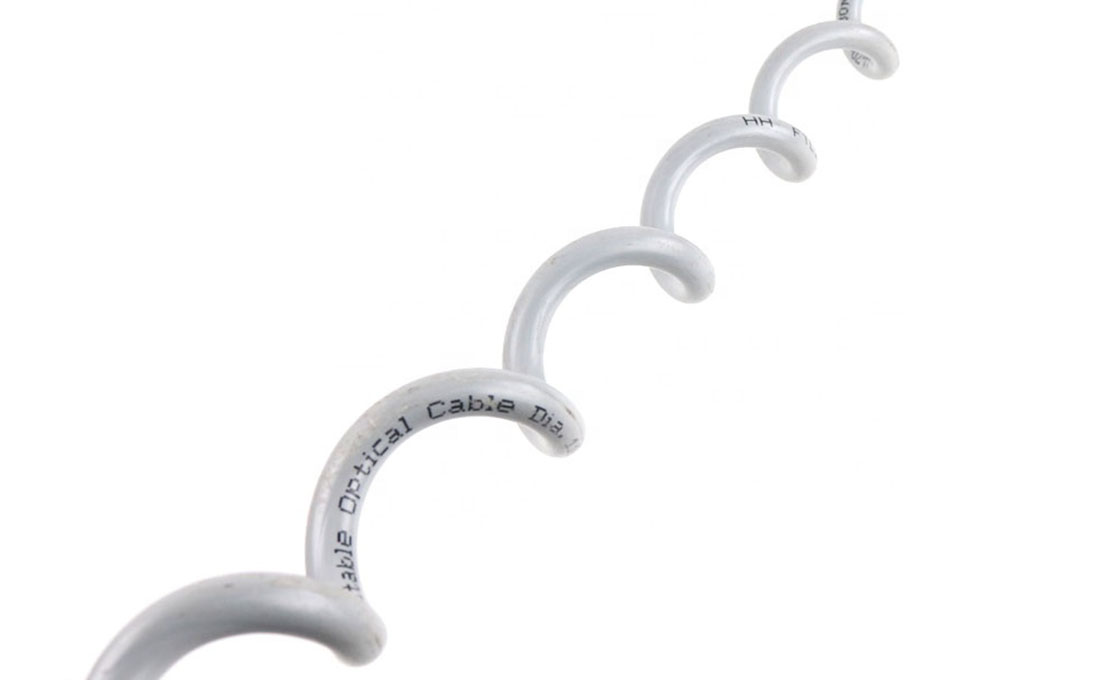Formed Wire Dead End
Powertelcom is a professional manufacturer and supplier of formed wire products, our preformed line products are widely used in Power utilities and communications industries all over the world.
A formed wire is basically a finished shaped wire which is created using a wire spool into a specific form. It can take nearly any form needed for the needed use, usually featuring various springs with a variety of size variations. These range from either little to quite a big size. What is more important to know, a formed wire is basically an extracted length of a piece of wire which has a sort of an exterior force being applied to it to create a specified shape for a highly specific need.
The formed wire is required to be cut, partial or completely bent, cut through different angles, wound through different forms, shaped by multiple closed coils, have added pieces fixated to it, and just about anything that the requirement needed.
Some of the major kinds of the configured wires that are created on a big scale in the industry for different purposes are highlighted as the following: Insulator tie (top tie, side tie, spool tie, and so on), dead end grip (both service dead end grip and distribution dead end grip), armor rod, suspension clamp, line guard, spiral vibration damper, conductor splice, and several more.
Preformed Line Product Manufacturer and Supplier
Powertelcom formed wires have specific functionalities. For example, a suspension clamp would be used for an overhead electrical cable. It would have a clamping member which is utilized for clamping the cable with the help of a portion of the longitudinal sides. Another example would be a line guard that is an object intended to provide protection from the abrasion and the arc. It also gives limited repair. The protection degree required on a certain level is dependable on different terms which include temperature, line design, tension, vibration history, and exposure to a similar development in a similar location. These and many others are some of the products of the formed wire used in the industries in extension and have found broad implications among various dimensions.
Powertelcom has designed and manufactured formed wires for utility and telecommunications customers since the last century, we supplied our preformed line products all over the world.
Formed Wire Dead End- The Complete Guide
A formed wire is generally used in the engineering sector, formed by a process called wire forming. The method is used to apply force for changing the contour of a wire through different techniques, all of which remain characteristic in giving a certain type to a formed type. These techniques include chamfering, swaging, shearing, piercing, and other methodologies. The different uses for the wire forming are able to make different configurations, forms, and shapes. The procedure executes with the help of a coiled wire which gets straightened prior to being formed.
Common metals that are utilized in this process involve brass, steel, stainless steel, aluminum, copper, and different alloy types. The wire diameters have variations from half of a millimeter to a 6.5 millimeter, or 1/64th part of one inch to a quarter inch. They would produce 2 and 3 dimensional formed wires.
The different types of machines for completing the process of wire forming vary from manual and conventional crafting to advanced CNC machines that are programmable. The technique involves different options for protecting and coating the final products for utilization in difficult situations.
What is Formed Wire?
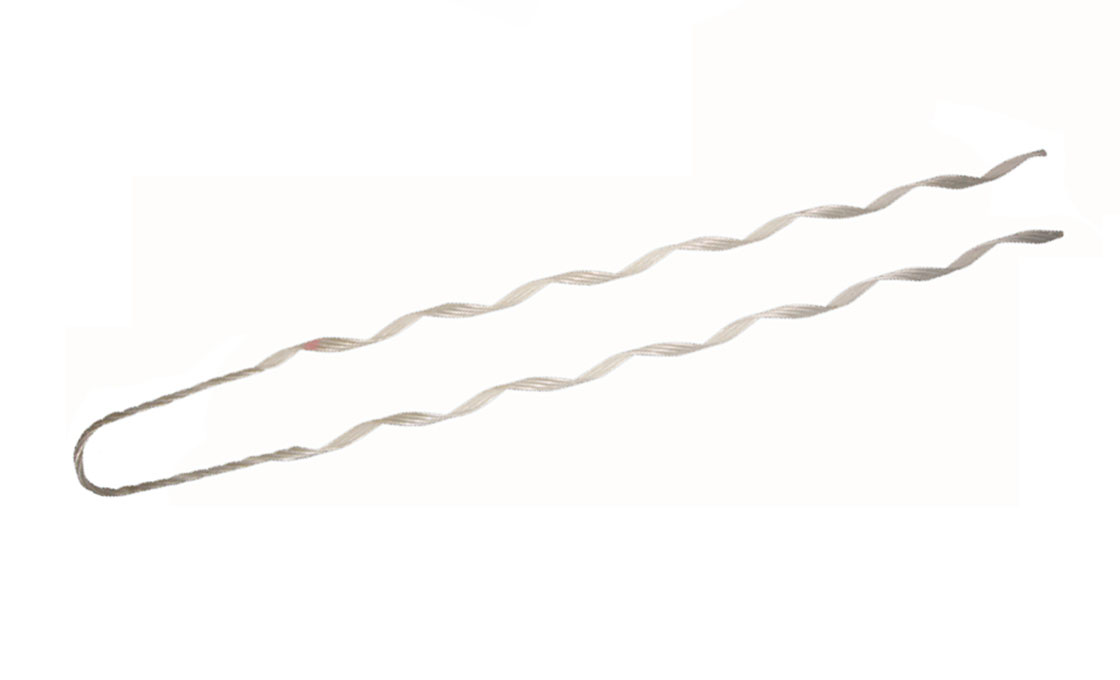
A formed wire is a finished shaped wire which is manufactured using a wire spool into a specific configuration. It can take almost any form needed for the required use, often featuring different springs with different size variations. These range from very small to quite a large size. More importantly, a formed wire is an extracted length of wire which has an exterior force being applied on it for making a peculiar shape for a peculiar job.
The formed wire is able to be cut, bent, cut through angles, wound, shaped through closed coils, have extra pieces added on to it, and just anything that the requirement awaits.
Classifications of Formed Wires
Let’s see some of the major types of formed wires that are manufactured on a large scale in the industry for various purposes. These include insulator tie, dead end grip, armor rod, suspension clamp, line guard, spiral vibration damper, conductor splice, and several more.
Insulator Tie
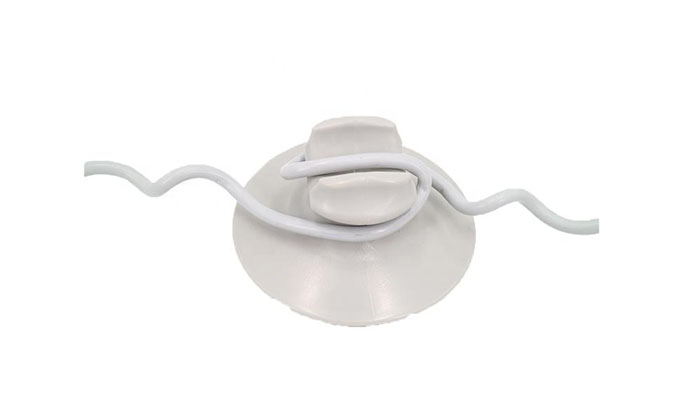
These are further characterized into the top tie, side tie, spool tie, and so on. For example, spool ties are utilized for replacing hand ties over an armor rod. These give ultimate protection against abrasions that appear with the motion of a conductor. There is also a pad available in there that offers a resilient cushion, offering a cushion to the conductor against the insulator. Hence, such ties are named insulator ties – these are used for jacketed conductors.
Another example would be a top tie which is an improvement of an armor rod, handled with hand tie wires and insulators present in clamp tops. These give protection against abrasions that comes from conductor motion types. The ties might be used to replace the hand tie wire in locations where there is no damage due to abrasion. It is applicable to secure the plastic jacket or a bare conductor in the top groove of the head style insulators which can be changed with one another. These are also known to give superior performance over Aeolian vibration and galloping.
Dead End Grip
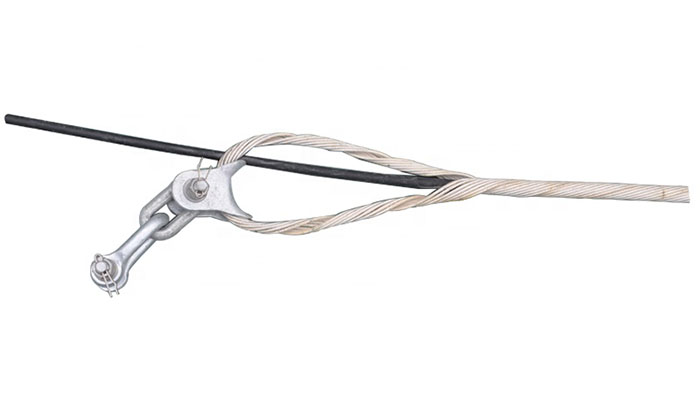
There are two dead end grips: Service dead end grips and distribution dead end grips. A distribution dead end grip is recommended to be used as a replacement for a bare looped dead end. That is because of its strong loops and cutting holding power on the ACSR cable. The aluminum steel grip is used on the conductors based on bare aluminum and galvanized steel grips that are used for plastic jacket conductors. These products are made for constructing a single pole distribution.
A service dead end grip, on the other hand, is made for messengers of cables that are self-supporting and used in making service drops. This type of dead end grip is recommended for the service drops by the reason of economy, length, and overall neatness of the appearance of the product.
Armor Rod
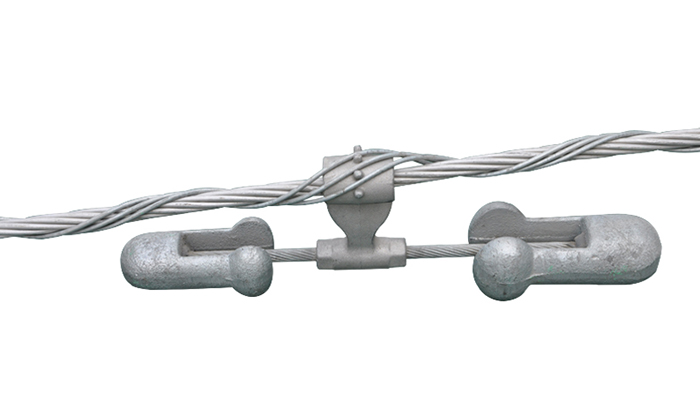
An armor rod design is made for protecting the conductor by reducing overall compression, bending, and abrasion at the support point. It also provides protection against overall flashover damage. The armor rods are suggested to be protective for spans that are higher than 300 ft or 91 meters. Most of these are utilized with ACSR, ACSS, AAC, or AAAC conductors and ground wires. All of the rod sets are manufactured with right-hand lay which is the standard.
Suspension Clamp
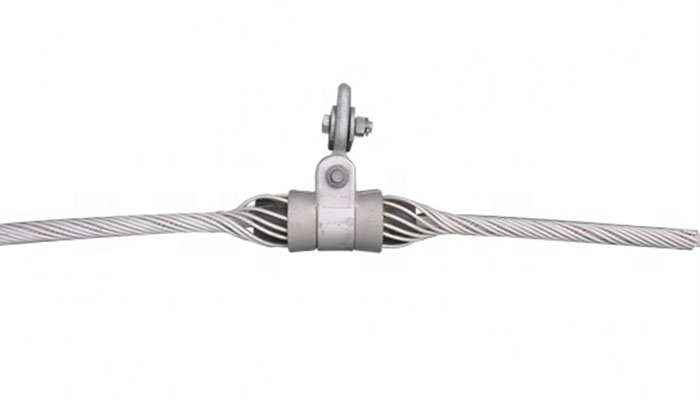
A suspension clamp is basically used for an overhead electrical cable and has a clamping member which is used for clamping the cable through a portion of the longitudinal sides. The arms of the clamp extend in an outward direction from the opposed lateral sides which is defined by the cable, these extend through the sides of the clamping member.
An ideal suspension clamp needs to be:
- Appropriate for a diversified range of cables
- Easily and quickly installed with no additional tool needed
- For lining angles that range from 30 degrees to a sharp 60 degrees
- Protect the cables in a good fashion
Line Guards
A line guard is basically intended to protect from the arc over as well as abrasion. It also offers some sort of repair. This protection level needed on a specified line depends on various terms and conditions such as temperature, line design, tension, vibration history, and exposure on a similar development in a similar location. These products are recommended to be providing a minimal level of protection for different hand tie spans.
Spiral Vibration Damper
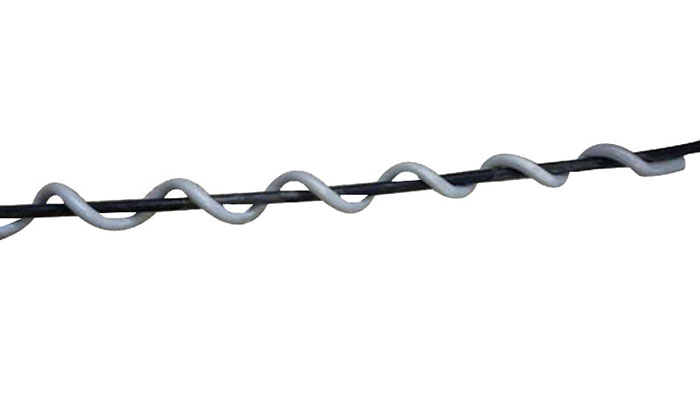
A spiral vibration damper is basically used for reducing the Aeolian vibration which is the high frequency and low amplitude vibration induced by the horizontal wind that passes through the line. It is made from solid thermoplastic and is not corrosive in nature. Furthermore, it is effective in a variety of different frequencies. There is no concentrated mass or any kind of clamping pressure that would be damaging to the guy wires. It gives an impact reactive protection against damper through helically formed rods made of plastic. This invention is ideally made to reduce the vibrations on smaller diameter cables.
Conductor Splice
The single component applications are generally designed for sub-level EHV applications. These outer layer products are usually composed of homogenous stranding made of aluminum or copper alloys. The splice would hold better if not more conductance than a non-spliced one and has a breaking strength rate of 90 percent to the least. It holds a minimum tension that accounts to the full strength of the strands of aluminum and 10 percent of the steel core strength as well. The conductance of the product is usually better than that of the unspliced conductor which is of an equivalent length.
Final Word
As we see, there are different varieties of formed wires, all having various functions and various modalities. Each form of formed wire comes with unique characteristics performing different functions that are explained. While some provide superior protection than others in terms of some aspects, others are made to cover a broad scale of features.
Frequently asked questions (FAQ)
What is formed wire?
A formed wire is also called preformed wire, it is a finished shaped wire which is manufactured using a wire spool into a specific configuration. It can take almost any form needed for the required use, often featuring different springs with different size variations. These range from very small to quite a large size. More importantly, a formed wire is an extracted length of wire which has an exterior force being applied on it for making a peculiar shape for a peculiar job.
The formed wire can be cut, bent, cut through angles, wound, shaped through closed coils, have extra pieces added on to it, and just anything that the requirement awaits.
What are the types of formed wires?
There are main 7 types:
- Insulator Tie
- Dead End Grip
- Armor Rod
- Suspension Clamp
- Line Guards
- Spiral Vibration Damper
- Conductor Splice
What specifications should you consider when choosing formed wire?
- Application
- Formed wire material
- Tensile strength
